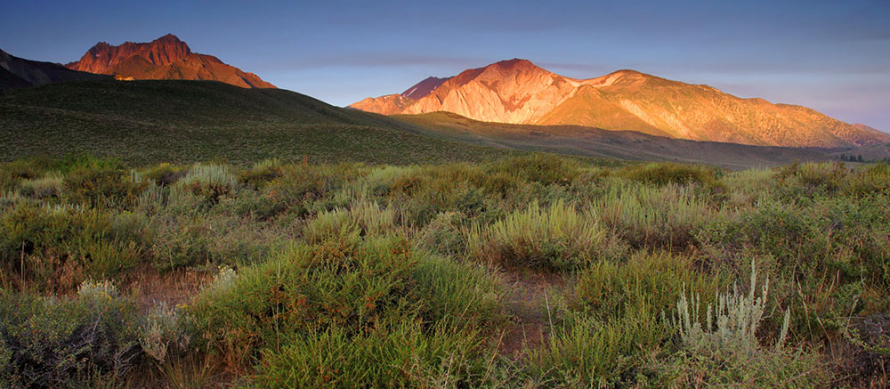The Convict Creek Experiment Station (now the Sierra Nevada Aquatic Research Laboratory) was established in 1935 by the US Bureau of Sport Fisheries and Wildlife to study the success of hatchery trout in a native stream. Acquired by UCSB in 1973, the site serves as a base for research and teaching in a large part of eastern, central California and western Nevada. With some of the most developed facilities in the Natural Reserve System and a considerable outreach program, SNARL is the UC outpost in this part of the State.
SNARL has overnight facilities for 45 persons in a dormitory, a three-bedroom house (Q8), a two-bedroom house (Q1), and 2 one-bedroom cottages (Q2 and Q3). Each unit has bunks, a kitchen with pots, pans, and dishes, and restroom facilities. There is no food or custodial service. Users are expected to furnish their own food, bedding, towels, vehicles, and equipment. Housing is assigned at the discretion of the Director. See the site map and building photos for more detail.
Lab/Office Facilities: SNARL has over 6,000 sq. ft. of lab and office space. There are wet labs, dry labs, a radioisotope lab, controlled-environment chambers, and shared laboratory equipment. Please see the laboratory orientation section for more detail. Broadband Internet is linked by fiber optics and is widely distributed around the Reserve. There is ample office space, a conference room, a new classroom/lecture hall that seats 120.
Special Features: Located at the base of Mt. Morrison, the perennial mountain stream Convict Creek flows through the Reserve. It is divided into channels for manipulative studies. In addition, a diversion supplies water to a set of nine artificial streams, each 1m x 50m long. SNARL provides excellent access to the high Sierra Nevada, Mono Lake, Long Valley, Owens Valley, Yosemite National Park, and the Great Basin.
Habitats: The Reserve protects examples of Great Basin sagebrush, riparian woodland, and riparian meadow communities. Protected from entry and grazing for many years, these communities are in excellent condition. Non-aquatic research is permitted and encouraged.
Databases: Long-term flow/temp records for Convict Creek; climate data; maps; bibliography of on-site research; synoptic collections; complete flora; selected species lists; aerial photos.
Personnel: On-site staff reserve director, stewards, staff scientists, research assistants.
NRS Publications Annotated SNARL Catalog of Vascular Plants, updated in 2013 and VESR Flora, 2nd ed. published in 2000, contains detailed flora of both SNARL and Valentine Camp.
SNARL area Webcam (Mammoth Yosemite Airport)
PC: Mark Chappell


